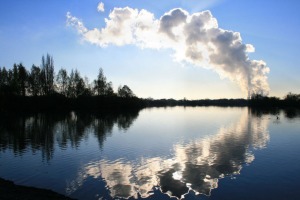
Greenhouse gas (GHG) levels are higher now than in the last 650,000 years. This causes the Earth to heat up, changing temperatures and lifestyles for the humans that inhabit Earth.
When specific gases in Earth’s atmosphere trap the heat from the sun, it is called the “greenhouse effect” because it warms the Earth like the walls of a greenhouse. The gases let light in but keep heat trapped. Sunlight shines on the Earth’s surface, where it’s absorbed and then released back into the atmosphere as heat. Greenhouse gases trap some of this heat, and then the rest goes into space. As Earth spins every day, new heat comes onto the surface, evaporating moisture from the oceans and scattering it around the world because of changing weather patterns. People have known about the greenhouse effect since 1824. The effect is what is keeping the climate of the world livable, and without it, Earth’s surface would be about 60 degrees Fahrenheit (15 degrees Celsius) cooler.
Instead of global warming, scientists now use the phrase “climate change”. As Earth’s temperature changes, winds, and ocean currents move heat throughout the world with results that can cool some areas, warm others, and change how much rain and snow falls. Earth’s climate slowly changes back and forth. For example, temperatures used to be cold enough for ice to cover parts of North America and Europe; today, global temperature averages are only 9 degrees Fahrenheit (5 degrees Celsius) warmer than during the ice ages. As the concentration of gases in the atmosphere rise, Earth’s last ice sheets are starting to melt. The extra water could increase sea levels massively. Likewise, weather could become more extreme. This could mean intense and vast storms or more rain before longer and drier droughts.
Global warming causes glaciers, like Antarctica and Greenland, to melt, sea levels to rise, and cloud forests to disappear. Temperature ranges will change where plants and animals live, and we will lose water sources that historically came from glaciers. Other factors that influence the global climate are volcanic eruptions that release specks of volcanic ash. These specks temporarily cool the world’s surface by blocking the sun’s light, but it only lasts for a short period. Humans are responsible for increasing global warming by burning fossil fuels and other gases. The amount of carbon dioxide in the atmosphere has grown tremendously since the industrial revolution when factories started burning fossil fuels. Forests, coasts, farms, and snow-capped mountains are in danger. Our Earth is at stake.
The greenhouse effect has always been around. Changes this large have historically taken thousands of years, but now are happening over decades because of humans.
[Source:
National Geographic
]

